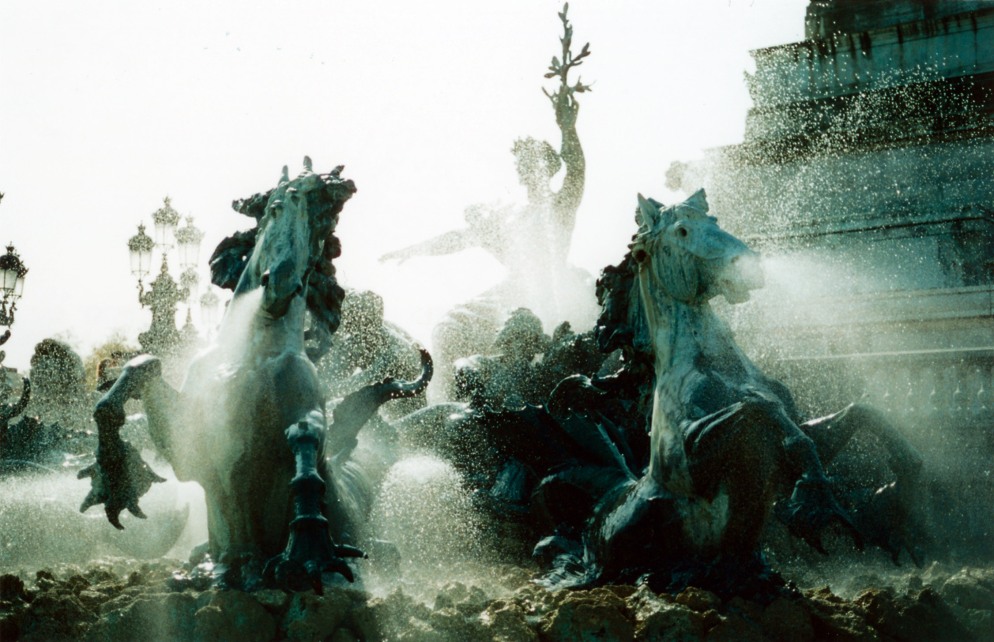
(Warning! Spoilers ahead for Episode 14 of The Jack Hansard Series.)
It’s been a while since I’ve written one of these Folklore Snippets, but I suppose Hansard hasn’t run into many beasties lately – or at least, no beasties inspired by our own, real world folklore. Hansard’s adventures have begun to take a darker turn and I’ve relished the opportunity to flex my horror muscles. Episode 14: Lament of the Lake features a monster of particularly macabre origins: the lake-dwelling, child-murdering kelpie.
This aquatic terror hales from the high peaks and ice cold waters of Scotland. Like many mythological water-dwellers, the kelpie has the ability to shape-shift and often appears in human form. But if you catch one in its natural guise, kelpies take the shape of a wild horse.
Usually, the human form of a kelpie is male – in most of the tales which were written down in the nineteenth century, at least. Later on, artists began painting kelpies as scantily clad maidens reclining on the rocks, much like the sirens of Greek mythology. You can put this down to either innocent misinterpretation of the stories, or the perversion of renowned artistes and their rich audiences. I know which one my money’s on.
Kelpies sometimes retain their hooves when in human form: a dead give-away to look out for if you’re in the habit of being chatted up by handsome lakeside strangers. Also watch out for water weeds and sand in their hair. Being Scottish, it’s natural that the kelpie inhabits lakes and rivers rather than the coastline. I suppose that makes it a freshwater monster. And monster it certainly is: a common theme to kelpie stories is the drowning of children.
One tactic favoured by the kelpie is to appear at the water’s edge as a beautiful horse; imagine a glossy coat and a shimmering mane. It entices both adults and children to ride on its back, and as soon as you are aboard the kelpie gallops into the depths. It may then eat its hapless victims, allowing their entrails – a lone lung or liver – to wash up on shore afterwards.
Sometimes, the kelpie’s trick is simply to let you stroke it. Who can resist a noble horsey gently nuzzling your hand? But then, much like what happens to Toby Everest’s poor son, your hand sticks fast to the horse’s coat and the kelpie drags you into the water. If you’re quick-witted, you might manage to save yourself from a watery grave by cutting your fingers off – and in some tales this is how the victim survives. But usually the kelpie claims many lives: the kelpie of Sunart is said to have taken nine children. This, and many more tales of tragedy attributed to a water-horse superstition, are compiled in John Campbell’s Superstitions of the Highlands and Islands of Scotland.
Thankfully, cutting off your fingers isn’t the only defence against a kelpie. There are a whole range of options for the monster hunters out there. You can outright kill one of the beasts by shooting it with a silver bullet, or, if one tale about a blacksmith is to be believed, merely poking them with hot iron will do the trick. If you can get the kelpie to appear in horse-form and find it to be wearing tack – that’s a bridle, saddle and other riding accoutrements to us non-horsey folk – remove the tack, and you’ve effectively disabled the kelpie, robbing it of its strength. Plus, that tack might have some nifty magic powers, such as turning humans into horses (or turning yourself half-kelpie, with the gift of second sight!). But what if your kelpie isn’t wearing a bridle? Have no fear – stick one on it! This would apparently capture the kelpie for your own amusement, trapping the creature in its horse shape and forcing it to obey your commands.
So what inspired the inception of this aquatic horror in the first place? The answer, I suspect, is so obvious it’s almost not worth pointing out. When you live in a place like Scotland, a landscape riddled with deep, unforgiving pools, it quickly becomes necessary to scare the bejeezus out of your children to keep them from playing too close to the water’s edge. Careless travellers who go for an ill-fated swim in a nearby lake get sucked into the rich body of folklore, and seeing as there is never a shortage of idiots, and Scotland certainly has no shortage of lakes, it’s a story that writes itself time after time and again.
So let that be a lesson to you, too: in all your wanderings, tread carefully by the lakeside, and be mindful of slippery rocks and treacherous weeds. And never, ever pet a strange horse by the water’s edge.
Reblogged this on The Hiding World and commented:
Dangerously attractive creatures are my favourite.
LikeLike